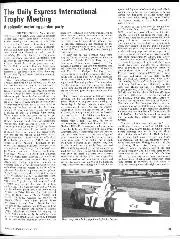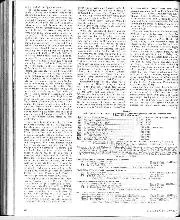

The Daily Express International Trophy Meeting
A splendid motoring garden party Silverstone, April 6th/7th One good thing about British sponsors is that they expect their teams to appear at British meetings and because of this there…
SECRETS OF ENGINE BALANCE.
By F. T. BERSEY, (Managing Director of the Laystall Engineering Works, Ltd.)
ACCORDING to theoretical principles the real secrets of engine balance are hidden away among the formulx of the designer, and provided his knowledge of the subject is correctly interpreted by the constructor, there should be no such thing as an ill-balanced engine. Practical motorists and speedmen in particular, however, know that theories must often give place to the
stern realities demonstrated on the road and track and my own interest in the very fascinating subject of engine balance dates from an incident which may be interesting to place on record. A friend of mine, some twenty years ago, purchased a high-powered racing car of well-known make, and as it had suffered considerable wear during long distance speed events on the Continent, proceeded to overhaul the engine and chassis. To a point his efforts were quite
successful, but when approaching the maximum speed of which the car was capable, he used to experience great difficulty in keeping a straight course, owing to the terrific vibration set up by the engine.
This peculiarity of the engine was so marked that the whole unit was taken to pieces and he asked me to assist in carrying out a kind of post-mortem inquiry, with the object of discovering the reason. About this time I had just installed a more or less primitive form of crankshaft balancing machine in my works, and though with regard to accuracy it could not compare with the model used at present, we were able to prove that the crankshaft and the flywheel of my friend’s machine were considerably out of balance. In those days, there was little data to guide our efforts in correcting the faults, but eventually we arrived at a
sufficiently good result to eliminate the periodical vibrations at high speed which had been so troublesome previously.
By virtue of this experience, I determined to take up the matter of practical engine balancing as a commercial proposition, and at the present time this particular operation constitutes a large part of the activities of the Laystall Engineering Works.
Theoretical Considerations.
In a brief review of this important subject it is impossible to go very far into the theories of engine balance, besides which, from the sporting motorist’s point of view, practice occupies the premier place. What I mean is, the sporting car owner can do little to alter the inherent features of the design of his engine, whereas he can pay a considerable amount of attention to the practical side of engine balance with extremely beneficial results.
Nevertheless, in order to give a slight insight to those who have never looked at the matter from a strictly theoretical point of view, I will enumerate the principal causes of engine vibration before describing how the practical remedies are carried out by the aid of scientific apparatus designed for the purpose.
Broadly speaking there are four possible causes of vibration in engines of normal design, which may be described as follows :—(I) Unbalanced revolving components. (2) Unbalanced reciprocating components. (3) Torque reaction and (4) Torsional flexibility of the crankshaft.